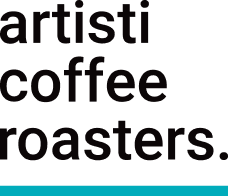For any cafe owner or home barista, making a great coffee is only half the battle. The true skill lies in being able to make a consistently great coffee, day after day. Joel from Artisti Coffee Roasters recently shared his professional insights on this exact topic, and we’ve compiled the key steps to help you master your espresso extraction.
Forget guessing—it’s time to become a coffee scientist. Here’s a simple, step-by-step guide to dialing in your espresso like a pro.
Watch our video instead - click here.
The Key Terms You Need to Know
Before you start, it’s crucial to understand a few core concepts.
-
Dose: Simply put, this is the amount of dry, ground coffee you're using. We measure this in grams for precision, not by volume or time.
-
Yield: This is the amount of wet, extracted coffee liquid that comes out of your machine. Like your dose, we measure this by weight in grams.
-
Brew Ratio: This is the relationship between your dose and your yield. It’s a simple ratio (Dose:Yield) that defines the style of your shot.
-
Ristretto: A 1:1 brew ratio. For every 1 gram of dry coffee, you get 1 gram of extracted liquid.
-
Normale (Double Shot): A 1:2 brew ratio. For every 1 gram of dry coffee, you get 2 grams of extracted liquid.
-
The Brew Recipe: Your Secret to Consistency
A brew ratio gives you a target, but a brew recipe adds the most important variable: time. It’s the three-part formula for a repeatable coffee: Dose, Yield, and Time.
Think of a baker following a recipe—they measure every ingredient to ensure the perfect cake every time. The same principle applies here. Once you’ve found the flavour profile you love, you can write down your recipe to replicate it perfectly.
Here at Artisti Coffee Roasters, our standard brew recipe for our popular Champion Blend is:
-
Dose: 22.5 grams of ground coffee in
-
Yield: 45 grams of extracted coffee out
-
Time: 34 to 36 seconds
This is a classic 1:2 Normale ratio, and by following this recipe, we ensure a consistent flavour across all our cafes.
How to Control Your Espresso Extraction
This is where the magic happens. Your goal is to keep your dose and yield constant while using your grinder to hit your target time.
-
Keep Dose and Yield Consistent: Use a digital scale to weigh your dose and your yield every single time. This is a non-negotiable step for consistency.
-
Adjust Your Grind Size: This is the primary lever you'll pull to control your extraction time.
-
Is your coffee extracting too fast? If you're hitting your yield in less time than your recipe calls for (e.g., 32 seconds instead of 34-36), you need to make your grind particle size finer. This will increase resistance and slow down the flow of water.
-
Is your coffee extracting too slow? If you're taking too long to hit your yield (e.g., 38 seconds), you need to make your grind particle size coarser. This will allow water to flow through the coffee more quickly.
-
The Takeaway
By adopting the brew recipe method, you move from guesswork to a quantifiable, repeatable process. This small change—weighing your dose and yield, then adjusting your grind—will give you the power to produce a consistently delicious coffee, whether you’re serving a cafe full of customers or making a single cup for yourself at home.











How does preinfusion factor in to the timing of the shot? Is that normally included in the shot time or is it separate? In other words in your example is the 36 second shot time window including any pre- infusion or is that noted separately and only representing brew time?